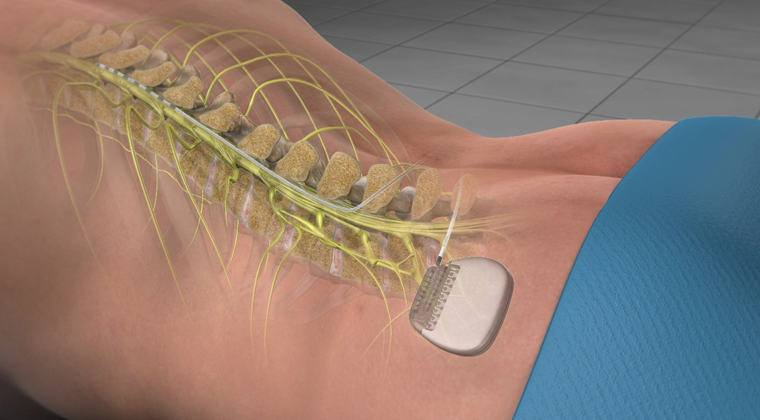Spinal Infusion Therapy
What is the purpose of this procedure?
Spinal Infusion therapy is an implantable pain relief therapy. Your physician implants a medication pumping device into the body that delivers medication directly to your spinal cord to block pain signals traveling to your brain. The device consists of a pump, a chamber to hold 1 or several types of pain medications, and a power source for the pump. When considering if an implantable pump is helpful for you, it is important to have a thorough assessment with your doctor. If a pump is recommended, a permanent system can be implanted through a minimally invasive surgery.
What are the risks associated with this procedure?
The risks are infrequent. They include:
• Allergic reaction to medication
• Nerve damage (spinal cord and nerve roots)
• Bleeding and bruising at the injection site as well as spinal hematoma
• Pain at the injection site or during the procedure
• Infection
• Spinal headache
• No improvement or worsening of your pain in some cases
How should I prepare for the procedure?
• You must have a driver with you at the time of check-in and check-out. Your driver must accompany you to the clinic for your procedure. You can be discharged only to the care of a responsible adult driver 18 years of age or older.
• Since you will be receiving sedation, it is important that you do not eat within 6 hours before the procedure. Small amounts of clear liquids are ok up to 2 hours before the procedure. If you have diabetes, discuss an eating and medication schedule with your doctor.
• You may need to stop taking certain medications several days before the procedure. Please remind the doctor of all prescription and over-the-counter medications you take, including herbal and vitamin supplements. The doctor will tell you if and when you need to discontinue the medications.
• It is very important to tell the doctor if you have asthma or had an allergic reaction to the injected dye for a previous radiology exam (CT scan, angiogram, etc.). An allergic reaction has symptoms such as hives, itchiness, difficulty breathing, or any treatment which required hospital stay.
• Tell the doctor if you develop a cold, fever, or flu symptoms before your scheduled appointment, or if you have started taking antibiotics for an infection.
What will happen during the procedure?
The procedure is performed on an outpatient basis in a special procedure room equipped with a fluoroscope (x-ray). In the pre procedure area the nurse or doctor will place an IV line. This is used for fluids and sedation.
- When you get to the procedure room for your safety and comfort you will be connected to monitoring equipment (EKG monitor, blood pressure cuff, and blood oxygen monitoring device), and positioned on your stomach.
- Your back is cleansed with an antiseptic soap after which the doctor injects numbing medicine into your skin. This will cause a burning sensation for a few seconds.
- You will be placed on your side. The fluoroscope is then used to identify the location for catheter insertion. At this point a needle is inserted at this site and the catheter is inserted through the needle into the spinal fluid.
- The pump is then implanted under the skin, usually in the abdomen. The catheter is then connected to the pump.
What should I do after the procedure?
After the procedure you will be taken to the recovery area where you will spend about 30 minutes. The device representative will program the pump and teach you how to use it. You will return in 1 week to evaluate the pump
Content supplied by:
Ronald Wasserman, M.D.
1.29.2020
Disclaimer: This document contains information and/or instructional materials developed by Michigan Medicine for the typical patient with your condition. It may include links to online content that was not created by Michigan Medicine and for which Michigan Medicine does not assume responsibility. It does not replace medical advice from your healthcare provider because your experience may differ from that of the typical patient. Talk to your healthcare provider if you have any questions about this document, your condition or your treatment plan. Patient Education by Michigan Medicine is licensed under a Creative Commons Attribution-NonCommercial-ShareAlike 3.0 Unported (CC BY-NC-SA 3.0) License. Last Revised 06/2018.



